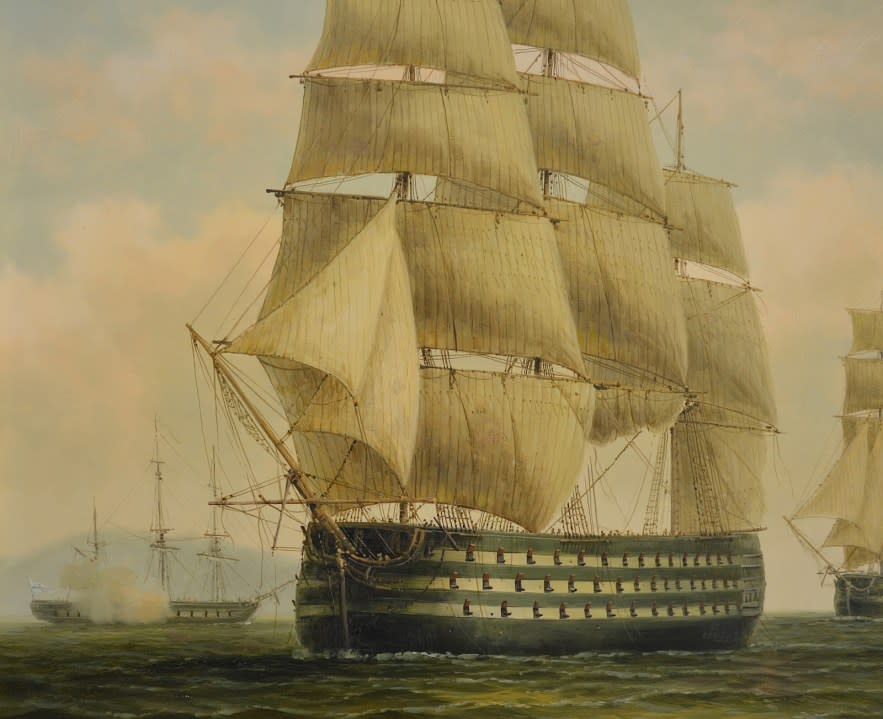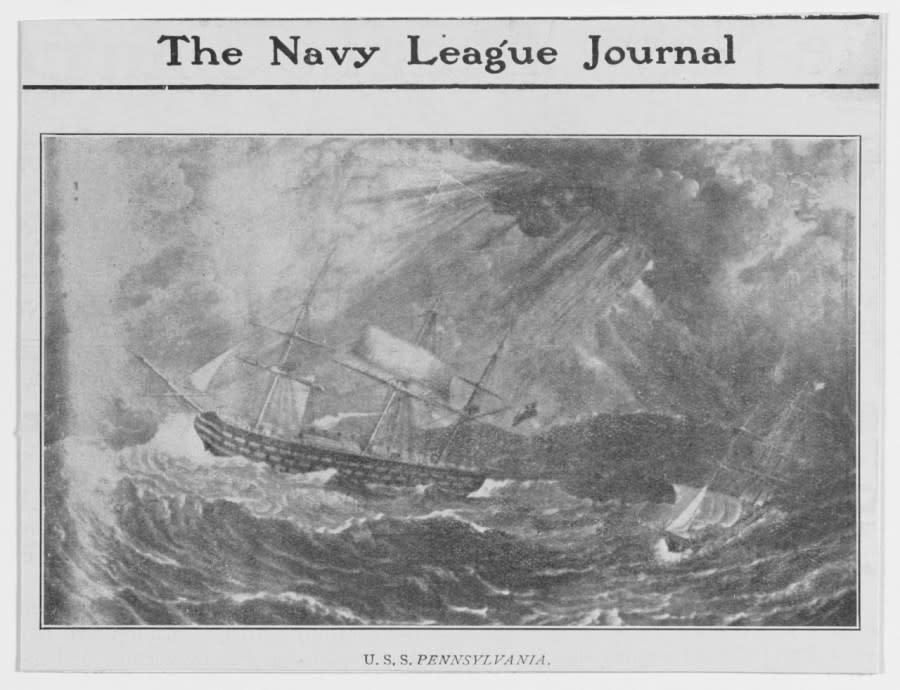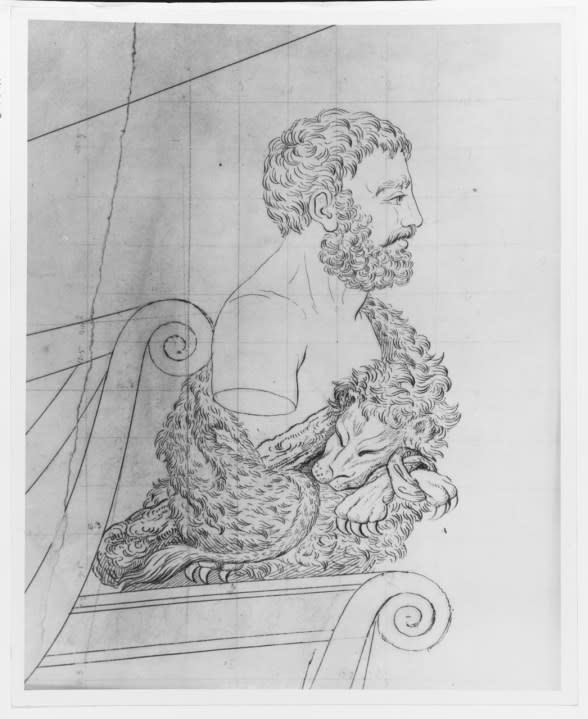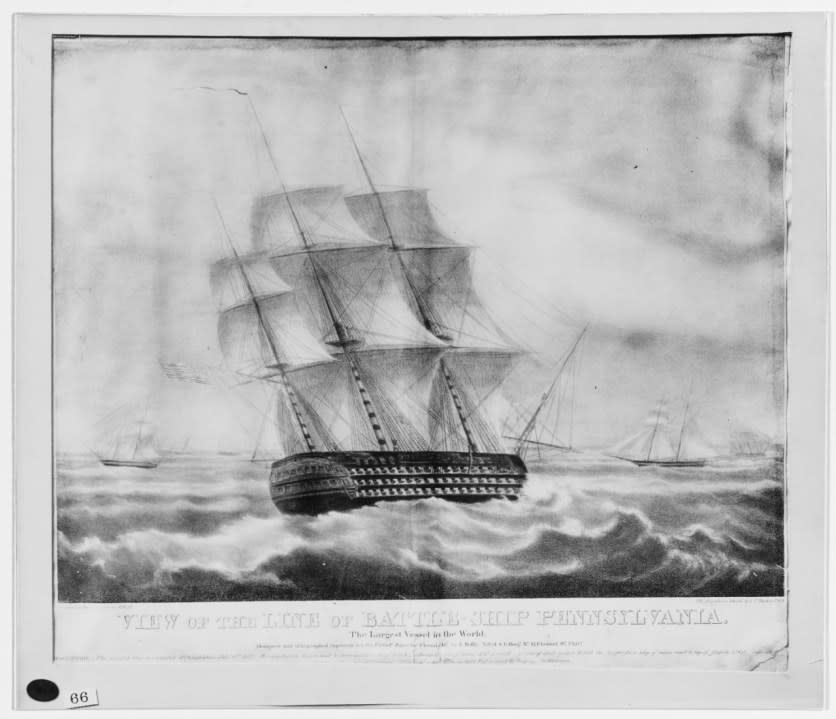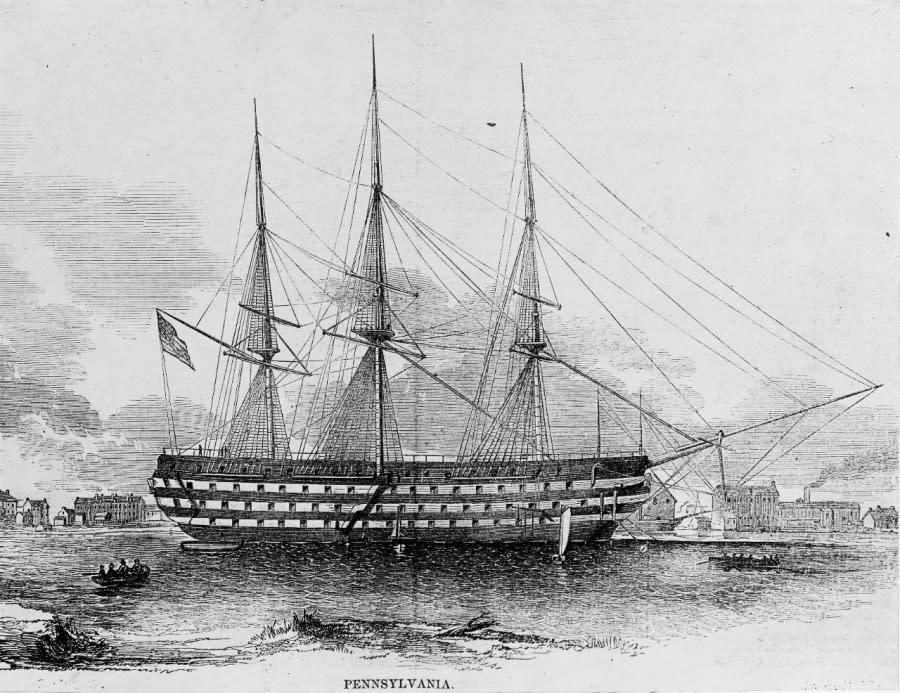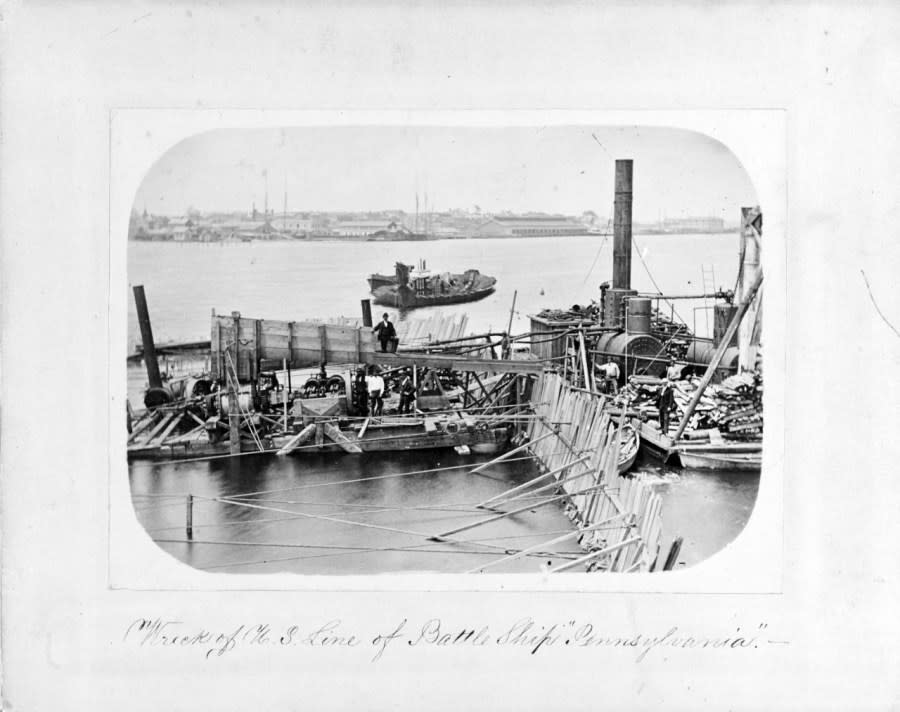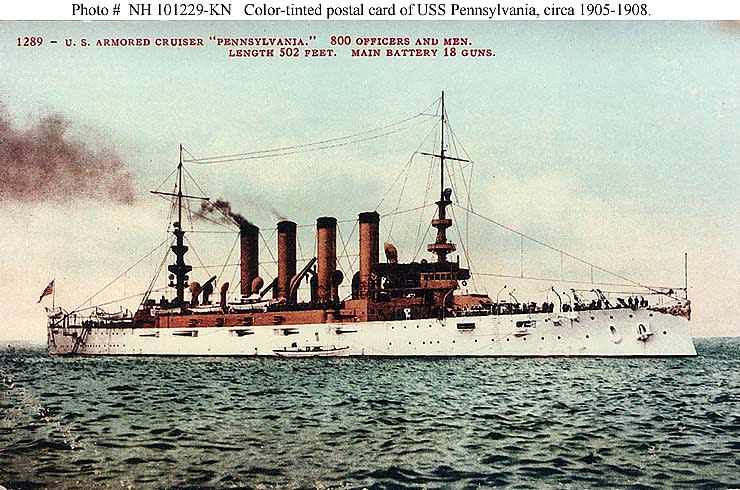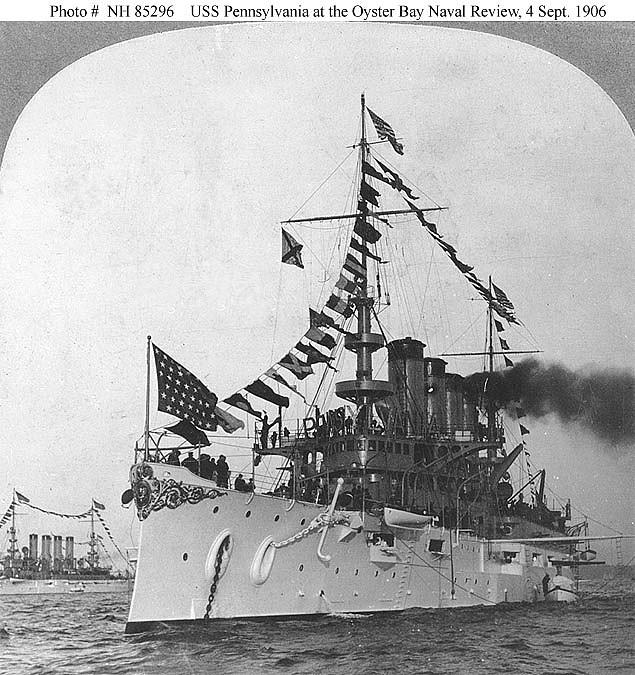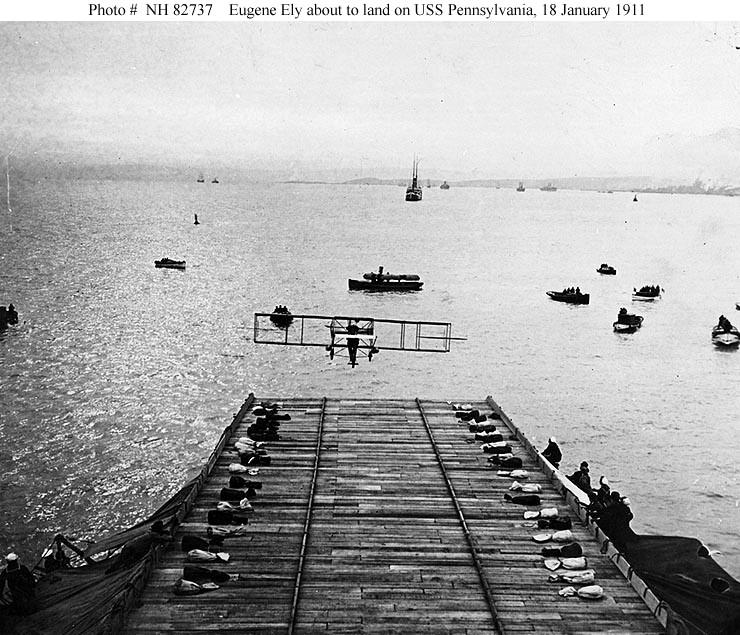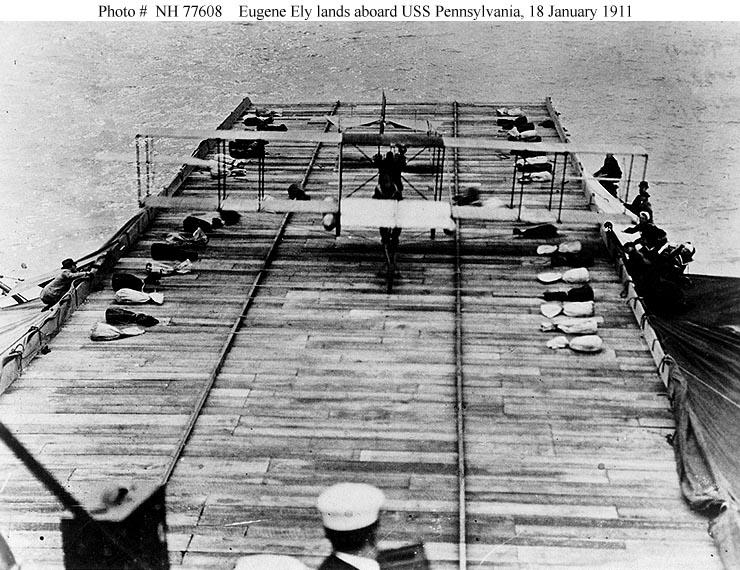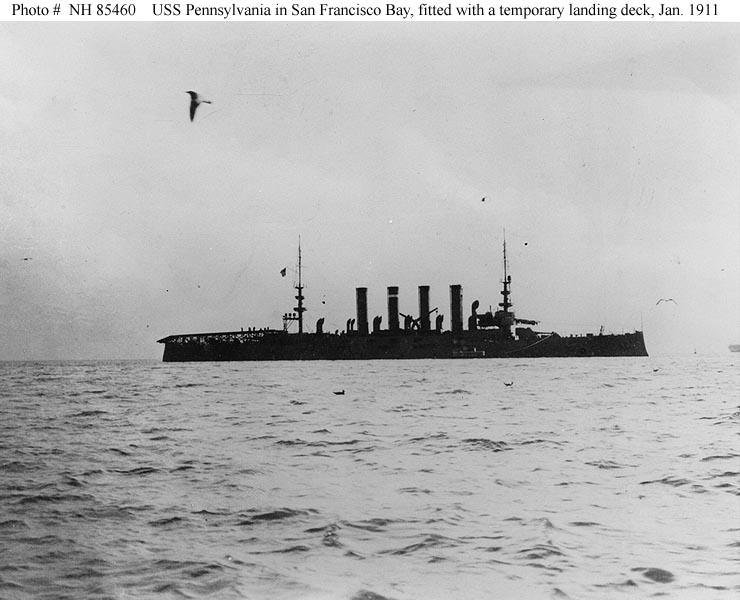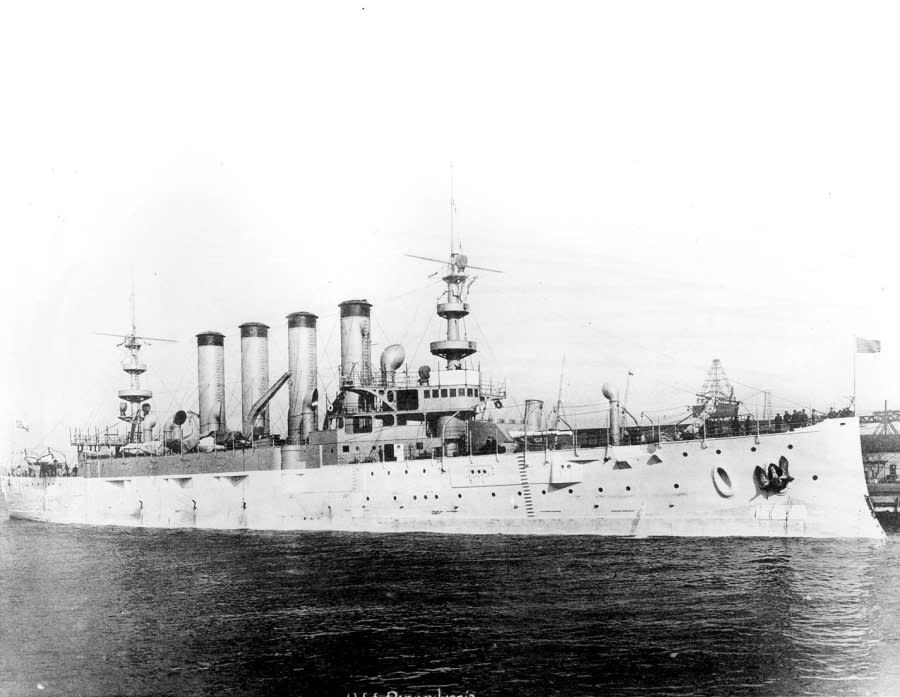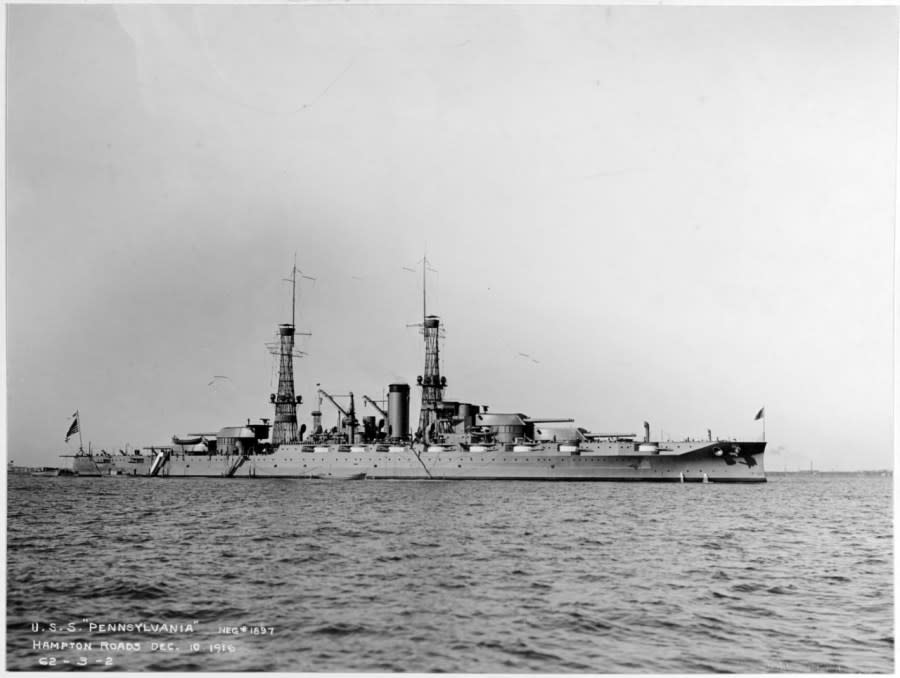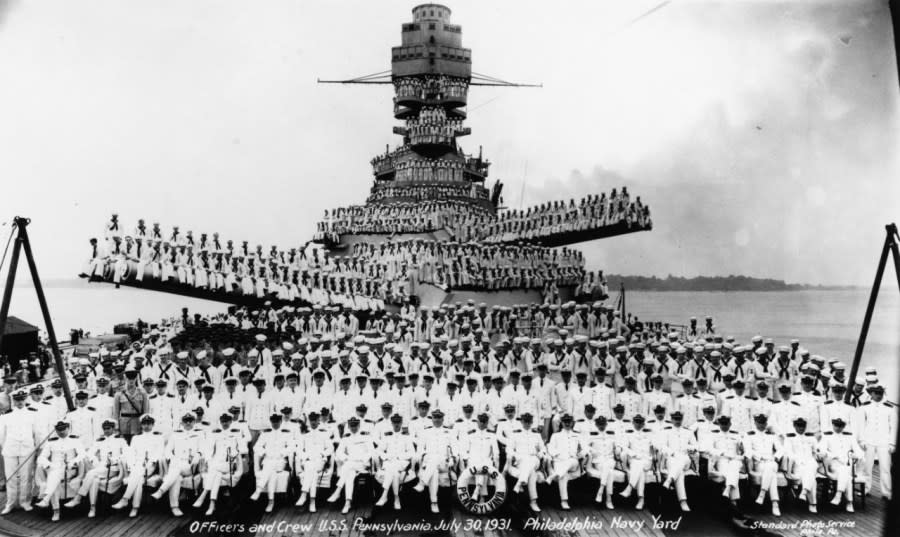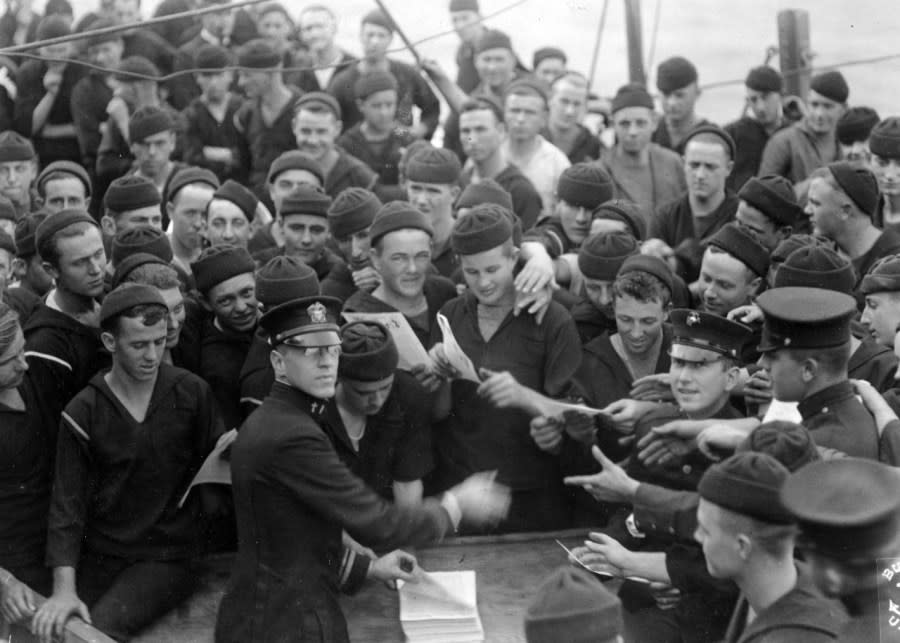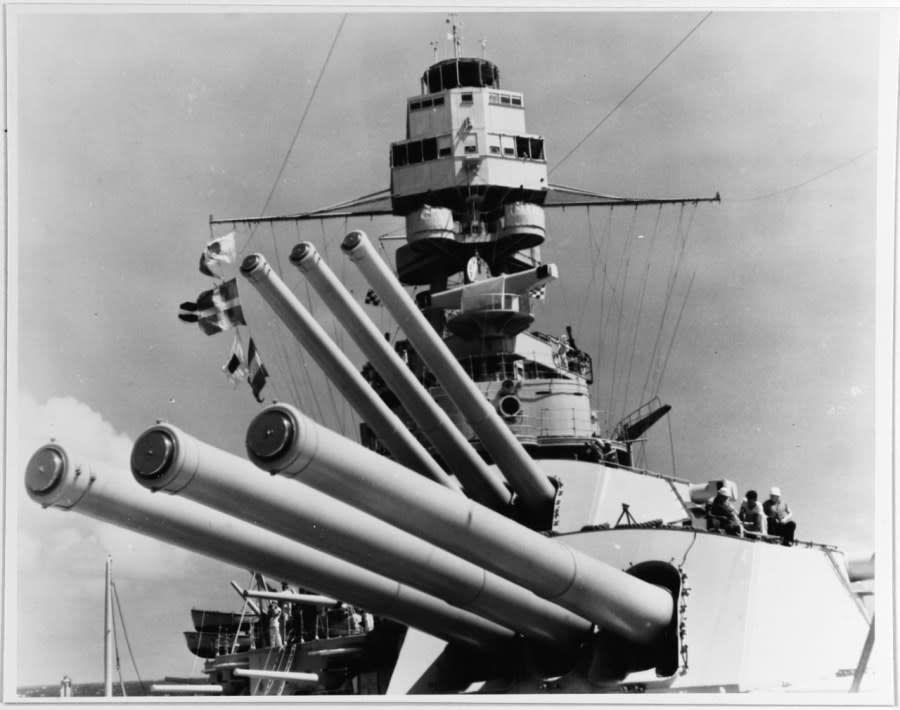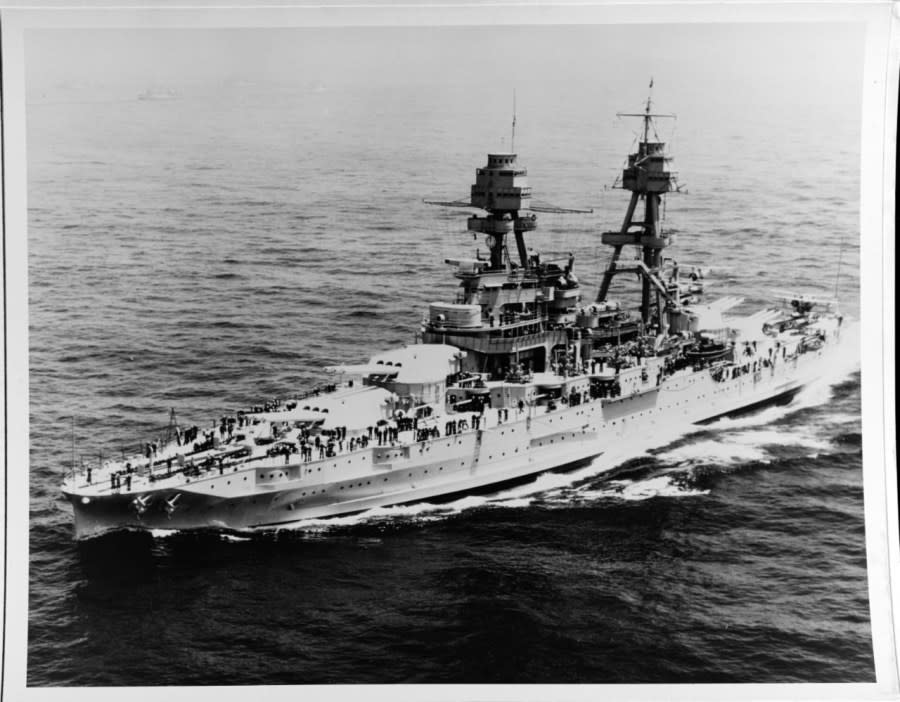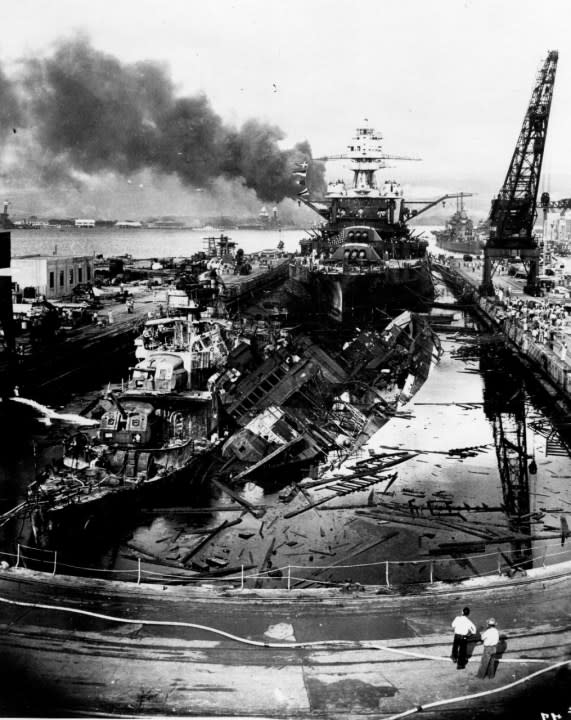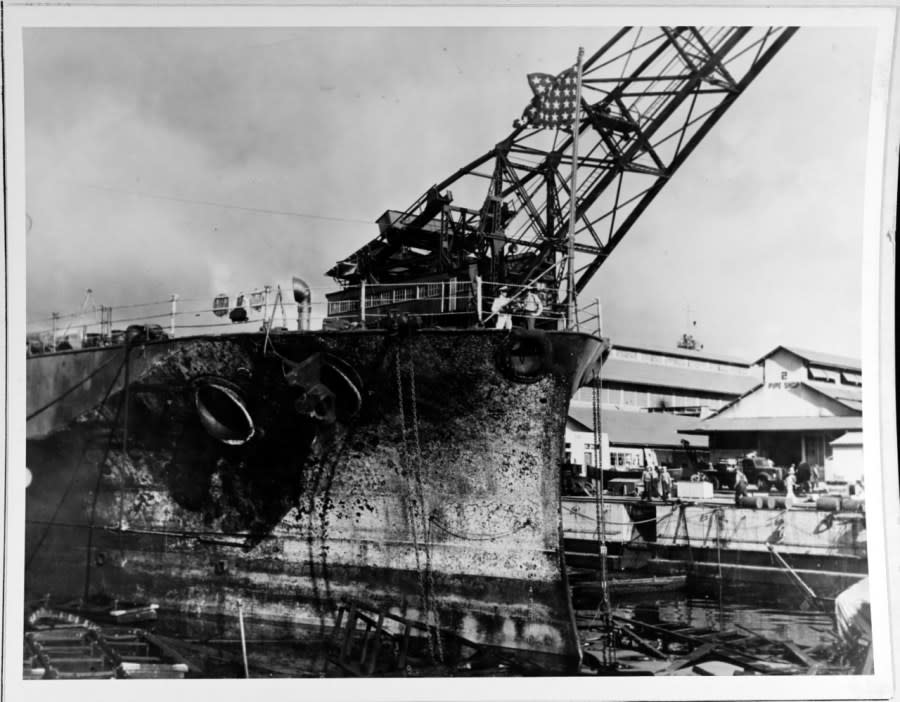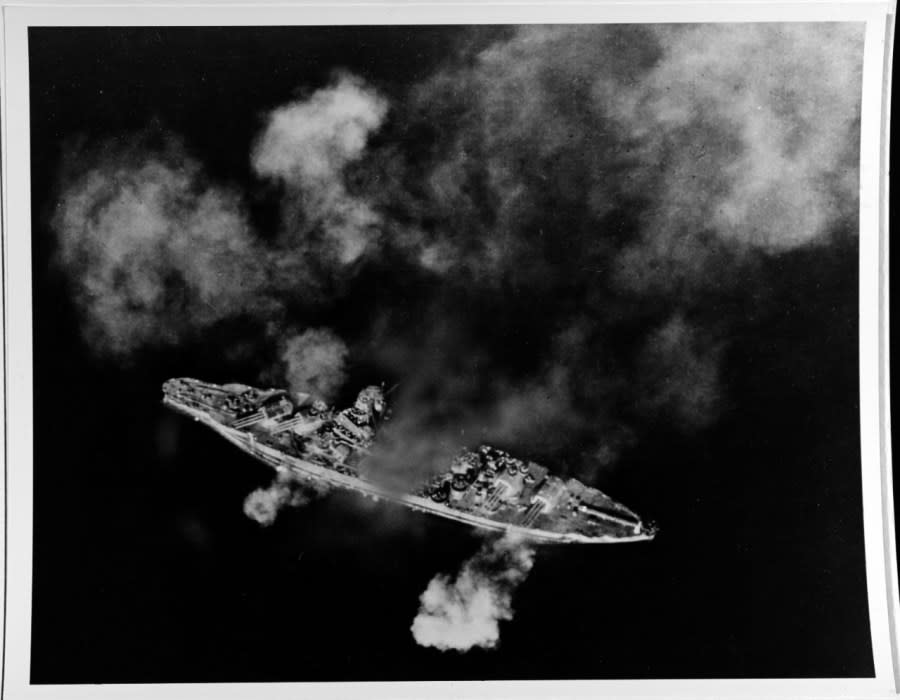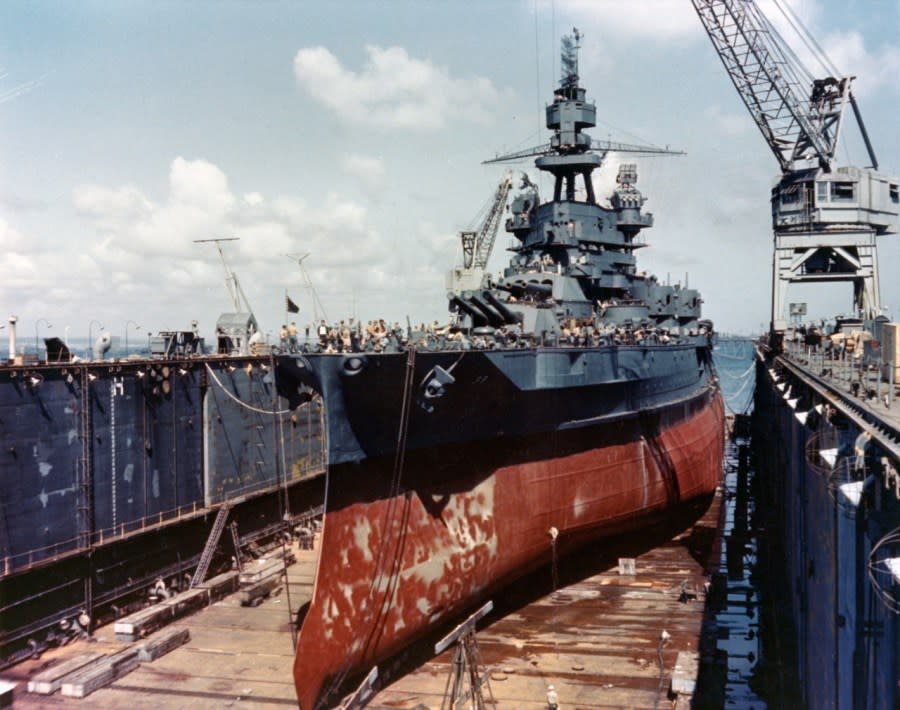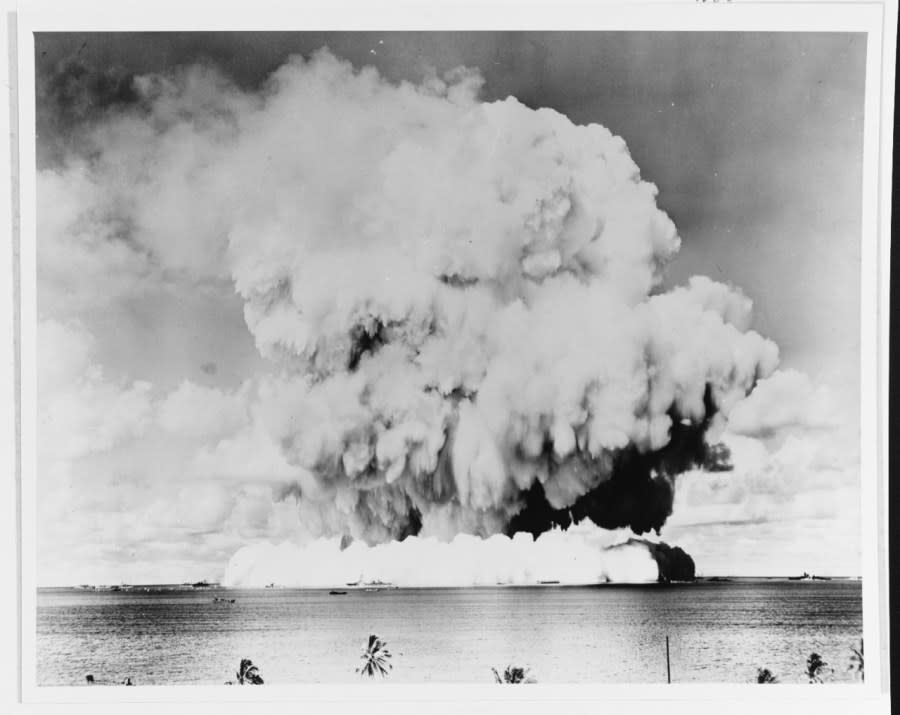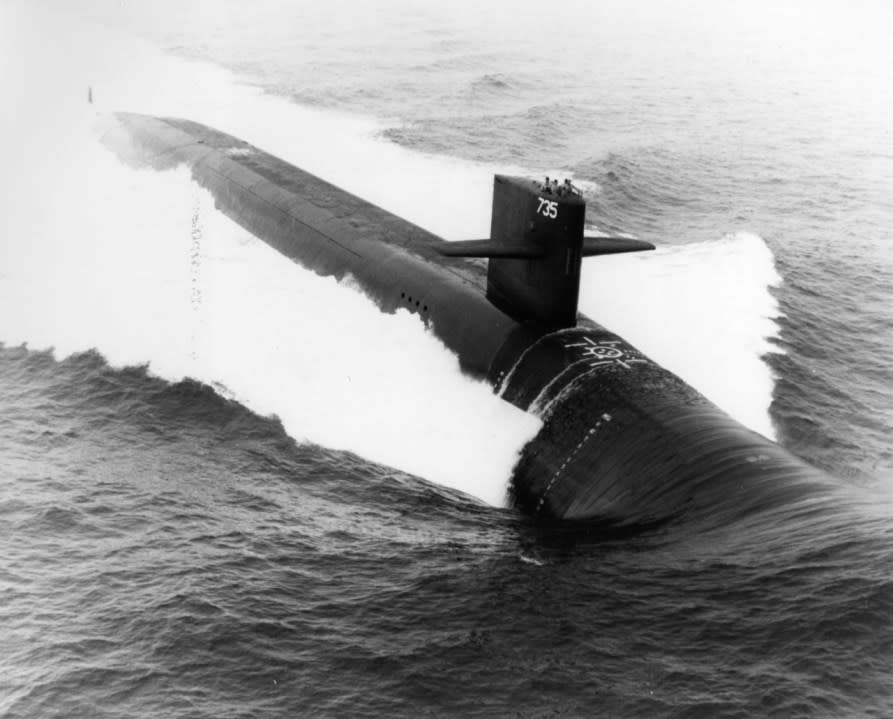How many ships have been named U.S.S. Pennsylvania?
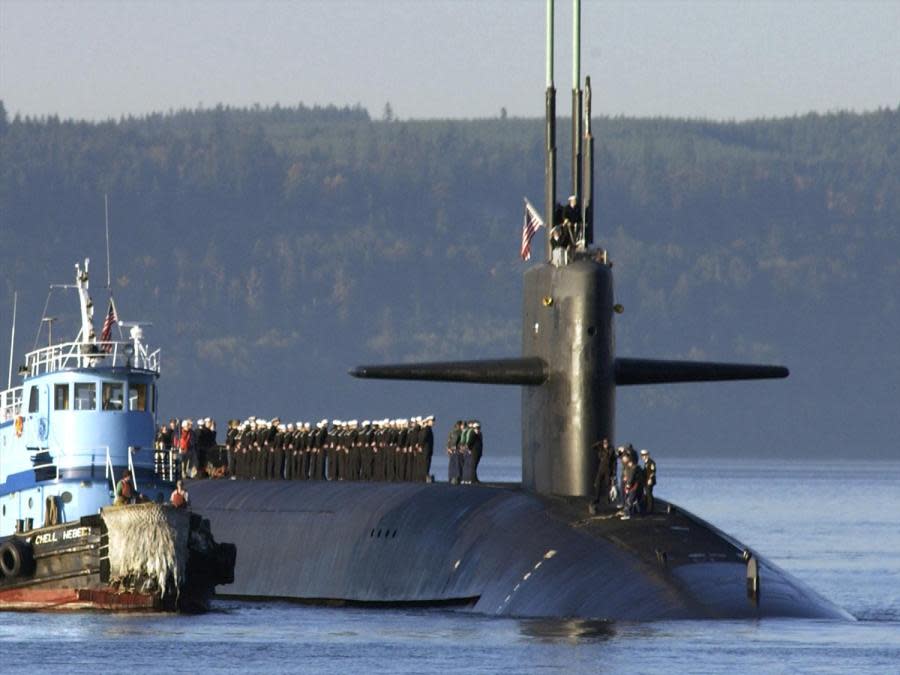
The Seven Seas (WHTM) – The U.S. Navy has a lot of ships, most of which have names. Ships get named after people (John Paul Jones), battles (Ticonderoga), cities (Pittsburgh), ships from history (Essex, Enterprise), military jobs (Sentry), fish (Seawolf), concepts (Freedom), and even important documents (Constitution).
The most important warships are named after states.
So, how many ships has the Navy named after Pennsylvania? The answer is four, each at the apex of naval armed might for their time. These four ships trace the evolution of sea power, from “wooden ships and iron men” to “war under the ocean.”
U.S.S. Pennsylvania Ship of the Line (1837-1861)
The term battleship derives from the behemoths of the age of fighting sail, the “line of battle” ship. The line of battle was the standard naval tactic from the 1500s into the 20th century. Two columns of ships would line up opposite each other, firing every cannon on one side of each ship (a broadside). The more cannons a ship could carry, the bigger the broadside, and the U.S.S. Pennsylvania was the largest sailing warship the Navy ever constructed.
U.S. Ship of the Line Pennsylvania: halftone reproduction of a painting depicting the ship in a storm, published in The Navy League Journal, circa the early 1900s. (U.S. Naval History and Heritage Command ) U.S. Ship of the Line Pennsylvania: design for her figurehead. Photograph from the Bureau of Ships Collection in the U.S. National Archives. Ship of the Line Pennsylvania Lithograph by A. Hoffy, No. 41 Chestnut St., Philadelphia, Pennsylvania, after a sketch by C.C. Barton, U.S.N. It was Designed and lithographed expressly for the Philada. Saturday Chronicle. (U.S. Naval History and Heritage Command Photograph.) Line engraving published in Gleason’s Pictorial, 9 July 1853, showing the ship at anchor off the Norfolk Navy Yard, Portsmouth, Virginia, where she was the receiving ship. This view is represents most of the right half of a longer original engraving entitled View of the United States Navy Yard at Gosport, opposite Norfolk, Virginia. (U.S. Naval History and Heritage Command Photograph.) Photograph taken circa the later 1860s, entitled Wreck of the U.S. Line of Battle Ship ‘Pennsylvania’. It depicts salvage operations on the burned and sunken ship, off the Norfolk Navy Yard, Portsmouth, Virginia. Note the burned ship hull floating in the middle distance, steam salvage engines and boilers, with their associated barge at right. (U.S. Naval History and Heritage Command Photograph.)
Launched from the Philadelphia Navy Yard in 1837, she weighed 3,105 tons, was 210′ long, and had a maximum beam (width) of 56′,9″. She carried a crew of 1,100 and was armed with 6 8-inch shell guns and 104 32-pounders on four gun decks, making her a match for the largest ships-of-the-line built in Europe.
But her great size proved to be her undoing. She was just too expensive for the young nation to operate. Her career was, to put it politely, less than distinguished. Pennsylvania’s only voyage was from Philadelphia to Norfolk, Virginia, where her crew was transferred to another ship. The Pennsylvania was laid up in ordinary, or as we would put it today, mothballed. She would become a receiving ship, housing new recruits before they received their assignments. She was still stuck in Norfolk when the Civil War broke out, and on April 20, 1861, she was burned to the waterline to keep her from being captured by Confederates.
U.S.S. Pennsylvania Cruiser ACR-4 ( 1905 – 1931)
Commissioned in 1905, the second U.S.S. Pennsylvania was a far cry from the line of battle ship of the previous century. Wooden ships and broadsides were a thing of the past; The new cruiser was built of metal, displaced 13, 400 tons, with a length of 503’11” and a beam of 69’7″. She was capable of making 22 knots, carried a crew of 829, and was armed with 4 8-inch guns, 14 6-inch guns, 18 3-inch guns, and 2 18-inch torpedo tubes.
U.S.S. Pennsylvania, ACR-4. U.S. (Naval History and Heritage Command Photograph) U.S.S. Pennsylvania, ACR-4. U.S. (Naval History and Heritage Command Photograph) First landing of an airplane on a ship, January 18, 1911. (Naval History and Heritage Command Photograph) First landing of an airplane on a ship, January 18, 1911. (Naval History and Heritage Command Photograph) U.S.S. Pennsylvania, ACR-4. U.S. (Naval History and Heritage Command Photograph) U.S.S. Pennsylvania, ACR-4. U.S. (Naval History and Heritage Command Photograph)
But the Cruiser Pennsylvania’s greatest claim to fame did not come in war. On January 18, 1911, Pilot Eugene Burton Ely touched down on a temporary runway erected on the stern of the Pennsylvania, becoming the first person to land an airplane on a ship.
On this date: 1st airplane landing on a ship
The Pennsylvania would continue to serve until 1931 – but not as the Pennsylvania. In 1912 she was renamed the U.S.S. Pittsburgh, to free up the name for a new battleship.
U.S.S. Pennsylvania, BB-38 (1916-1946)
Battleship Pennsylvania, commissioned in 1916, displaced 31,400 tons, measured 608′ long, had a beam of 97’1″, and carried a crew of 915. She carried 12 14-inch guns, 14 5-inch guns, 4 3-inch guns , 4 3-pounders, and 2 21-inch torpedo tubes. She saw little action during World War I, but more than made up for it in World War 2. She spent the years between the wars patrolling, engaging in fleet exercises, and shifting from the Atlantic to the Pacific several times through the Panama Canal.
USS Pennsylvania (BB-38) in Hampton Roads, Virginia, on 10 December 1916. (U.S. Naval History and Heritage Command Photograph) Ship’s Officers and Crew at Philadelphia, Pennsylvania on 30 July 1931. (U.S. Naval History and Heritage Command Photograph) USS Pennsylvania (BB-38) Chaplain distributing the ship’s newspaper to sailors and Marines of her crew, circa 1918. Almost all the Sailors present are wearing knitted watch caps. (U.S. Naval History and Heritage Command Photograph) USS Pennsylvania (BB-38) View of the battleship’s forward 14/45 guns and her forward superstructure, circa the early 1930s. (U.S. Naval History and Heritage Command Photograph) Underway off New York City during the Naval Review before President Franklin D. Roosevelt, 31 May 1934. Pennsylvania was then serving as flagship of the Commander in Chief, U.S. Fleet, Admiral David F. Sellers, USN. (U.S. Naval History and Heritage Command Photograph) he wrecked destroyers USS Downes (DD-375) and USS Cassin (DD-372) in Drydock One at the Pearl Harbor Navy Yard, soon after the end of the Japanese air attack. Cassin has capsized against Downes. USS Pennsylvania (BB-38) is astern, occupying the rest of the drydock. The torpedo-damaged cruiser USS Helena (CL-50) is in the right distance, beyond the crane. Visible in the center distance is the capsized USS Oklahoma (BB-37), with USS Maryland (BB-46) alongside. Smoke is from the sunken and burning USS Arizona (BB-39), out of view behind Pennsylvania. USS California (BB-44) is partially visible at the extreme left. (This image has been attributed to Navy Photographer’s Mate Harold Fawcett. Official U.S. Navy Photograph, now in the collections of the National Archives) Blistered paint and other fire damage to the forward hull of USS Pennsylvania (BB-38), in Drydock # 1 at the Pearl Harbor Navy Yard shortly after the Japanese raid. Note Jack flying at the battleship’s bow. (Official U.S. Navy Photograph, from the collections of the Naval History and Heritage Command) USS Pennsylvania (BB-38) firing her 14/45 and 5/38 guns while bombarding Guam, south of the Orote Peninsula, on the first day of landings, 21 July 1944. (Official U.S. Navy Photograph, from the collections of the Naval History and Heritage Command) USS Pennsylvania (BB-38) Description: USS Pennsylvania (BB-38) Drydocked in an Advanced Base Sectional Dock (ABSD) at the Pacific, circa 1944. Note the extensive anti-torpedo blister built into her hull side and paravane streaming chains running from her forefoot to her foredeck. (Official U.S. Navy Photograph, now in the collections of the National Archives.) Operation Crossroads, 1946 “Baker Day” A-bomb underwater blast, seen from shore of Bikini Atoll, 25 July 1946. Copyright Owner: National Archives
December of 1941 found Pennsylvania in drydock – at Pearl Harbor. When the Japanese attacked on December 7, The ship sustained some damage, but was able to leave Pearl and sail to San Francisco on the 20th for major repairs. She served in multiple campaigns in the Pacific, and on August 12, 1945, had the dubious honor of being the last major U.S. warship damaged in the war, when she was hit in the stern by a Japanese torpedo. Pennsylvania received eight battle stars for her World War II service.
Her last mission was as a target. Pennsylvania was anchored at Bikini Atoll in 1946 for Operation Crossroads, as one of the 84 targets for atomic bomb tests. She survived two explosions but became so radioactive that she was decommissioned in 1946, and finally scuttled in 1948.
Pearl Harbor survivor Jack Holder dies in Arizona at age 101
U.S.S. Pennsylvania SSBN-735
The latest ship to bear the name of the Keystone State, the Ohio-class ballistic missile submarine U.S.S. Pennsylvania was commissioned on September 9, 1989. SSBN denotes Ship, Submersible, Ballistic missile, Nuclear powered. Nicknamed “Boomers”, they carry as many as 24 Trident II D-5 nuclear ballistic missiles. At 560 feet long and 42 feet wide, they are the largest submarines in the U.S. Navy’s inventory.
The Ohio-class ballistic missile submarine USS Pennsylvania transits the Hood Canal as the boat returns to its homeport at Naval Base Kitsap-Bangor, Wash., Dec. 27, 2017, following a routine strategic deterrent patrol. The Pennsylvania is one of eight ballistic missile submarines stationed at the base, providing the most survivable leg of the strategic deterrence triad for the United States. (Navy photo by Petty Officer 1st Class Amanda R. Gray) USS Pennsylvania (SSBN-735) underway off the coast of New England in August 1989 (National Archives)
The latest Pennsylvania is still in service today.
For the latest news, weather, sports, and streaming video, head to ABC27.
